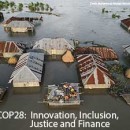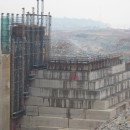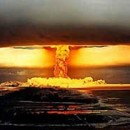Languages
Thursday, April 25, 2024
News and Views from the Global South

UN Security Council Holds Rare Nuclear Disarmament Debate
Japan chaired a rare, high-level UN Security Council meeting on nuclear disarmament and nonproliferation on March 18. Although the meeting underscored the urgency of addressing the growing threats posed by nuclear weapons, it also highlighted the chronic divisions among key states on disarmament and nonproliferation issues.
New Tactical Nuclear Weapons? Just Say No
Russian President Vladimir Putin’s brutal war on Ukraine, along with his implied threats of nuclear weapons use against any who would interfere, has raised the specter of nuclear conflict.
On Nuclear Weapons, Actions Belie Reassuring Words
On Jan. 3, the leaders of the five nuclear-armed members of the nuclear Nonproliferation Treaty (NPT) issued a rare joint statement on preventing nuclear war in which they affirmed, for the first time, the 1985 Reagan-Gorbachev maxim that “a nuclear war cannot be won and must never be fought.”
Biden’s Nuclear Posture Review Must Reduce the Role of Nuclear Weapons
Most successful U.S. presidents have actively led efforts to advance arms control agreements and reduce the risk of nuclear war. Although much has been achieved over the years, there are still 14,000 nuclear weapons and nine nuclear-armed states; progress on disarmament has stalled; and tensions between the United States and its main nuclear adversaries—Russia and China—are rising.
If “A Nuclear War Must Never Be Fought,” Then …
After more than a decade of rising tensions and growing nuclear competition between the two largest nuclear-weapon states, U.S. President Joe Biden and Russian President Vladimir Putin agreed at their June 16 summit to engage in a robust “strategic stability” dialogue to “lay the groundwork for future arms control and risk reduction measures.”
Nuclear Testing, Never Again
Seventy-five years ago, on July 16, the United States detonated the world’s first nuclear weapons test explosion in the New Mexican desert. Just three weeks later, U.S. Air Force B-29 bombers executed surprise atomic bomb attacks on the cities of Hiroshima and Nagasaki, killing at least 214,000 people by the end of 1945, and injuring untold thousands more who died in the years afterward.
Nuclear False Warnings & the Risk of Catastrophe
Forty years ago, on Nov. 9, the U.S. Defense Department detected an imminent nuclear attack against the United States through the early-warning system of the North American Aerospace Defense Command (NORAD). U.S. bomber and missile forces went on full alert, and the emergency command post, known as the “doomsday plane,” took to the air.
The Risk of Nuclear War is Increasing
Over the long course of the nuclear age, millions of people around the world, often led by a young generation of clear-eyed activists, have stood up to demand meaningful, immediate international action to halt, reduce, and end the threat posed by nuclear weapons to humankind and the planet.
Close the Door on Nuclear Testing
Everybody knows that nuclear weapons have been used twice in wartime and with terrible consequences. Often overlooked, however, is the large-scale, postwar use of nuclear weapons:
US & Iranian Actions Put Nuclear Deal in Jeopardy
Iran’s announcement that it may soon breach the 300-kilogram limit on low-enriched uranium set by the 2015 nuclear deal is an expected but troubling response to the Trump administration’s reckless and ill-conceived pressure campaign to kill the 2015 nuclear agreement, known as the Joint Comprehensive Plan of Action (JCPOA).
Trump’s Arms Control Gambit: Serious or a Poison Pill?
Smart U.S. leadership is an essential part of the nuclear risk reduction equation. Unfortunately, after more than two years into President Donald Trump’s term in office, his administration has failed to present a credible strategy to reduce the risks posed by the still enormous U.S. and Russian nuclear arsenals, which comprise more than 90 percent of the world’s nuclear weapons.
The NPT & Conditions for Nuclear Disarmament
Fifty years ago, shortly after the conclusion of the 1968 nuclear Nonproliferation Treaty (NPT), the United States and the Soviet Union launched the Strategic Arms Limitation Talks (SALT).
Preventing a New Euro-Missile Race
Next month, it is very likely the Trump administration will take the next step toward fulfilling the president’s threat to “terminate” one of the most far-reaching and most successful nuclear arms reduction agreements: the 1987 Intermediate-Range Nuclear Forces (INF) Treaty, which led to the verifiable elimination of 2,692 Soviet and U.S. missiles based in Europe.
Trump’s Counterproductive Decision to “Terminate” the Intermediate-Range Nuclear Forces Treaty
Under the influence of his new National Security Advisor, John Bolton, Trump announced Saturday at a campaign rally that he will “terminate” a key nuclear arms control agreement that helped end the Cold War race–the Intermediate-Range Nuclear Forces (INF) Treaty in response to a long-running dispute over Russian noncompliance with the treaty.
The Case for a U.S. No-First-Use Policy
Stanley Kubrick’s classic 1964 film “Dr. Strangelove” delivers an eerily accurate depiction of the absurd logic and catastrophic risks of U.S. and Russian Cold War nuclear deterrence strategy, but for one key detail: President Merkin Muffley was wrong when he said, “It is the avowed policy of our country never to strike first with nuclear weapons.” But it should be.
Can the U.S. and Russia Avert a New Arms Race?
Five long years have passed since U.S. President Barack Obama proposed and Russian President Vladimir Putin unfortunately rejected negotiations designed to cut their excessive nuclear stockpiles by one-third below the limits set by the 2010 New Strategic Arms Reduction Treaty (New START).
Nuclear Nonproliferation Malpractice
The global nuclear nonproliferation system has always relied on responsible leadership from the United States and other global powers. The effort to create, extend, and strengthen the nuclear Nonproliferation Treaty (NPT), which was opened for signature 50 years ago on July 1, 1968, has succeeded, albeit imperfectly, because most U.S. presidents have made good faith efforts to back up U.S. legal and political commitments on nuclear arms control, nonproliferation, and disarmament.
Freezing & Reversing North Korea’s Nuclear Advances
For most of the past year, North Korea’s provocative long-range missile launches and a high-yield nuclear test, combined with the reckless threats of “fire and fury” and “preventive war” from the White House, have raised tensions and increased the threat of a catastrophic conflict in the region. Some of us warned that nuclear war was closer than at any point since the Cold War.
Trump Hurtles Toward Three Nuclear Crises
One year into the unorthodox presidency of Donald Trump, the United States faces an array of complex and dangerous foreign policy challenges that require principled leadership, pragmatism, patience, and smart diplomacy.
First Use of Nuclear Weapons Would be Counterproductive
Over the past year, cavalier and reckless statements from President Donald Trump about nuclear weapons and his threat to unleash “fire and fury” against North Korea have heightened fears about Cold War-era policies and procedures that put the authority to launch nuclear weapons in his hands alone.
Sixth North Korean Nuclear Test Creates New, More Dangerous Phase in Nuclear Crisis
North Korea’s 5.9 to 6.3 magnitude nuclear test explosion September 3 marks a new and more dangerous era in East Asia.Next Page »














